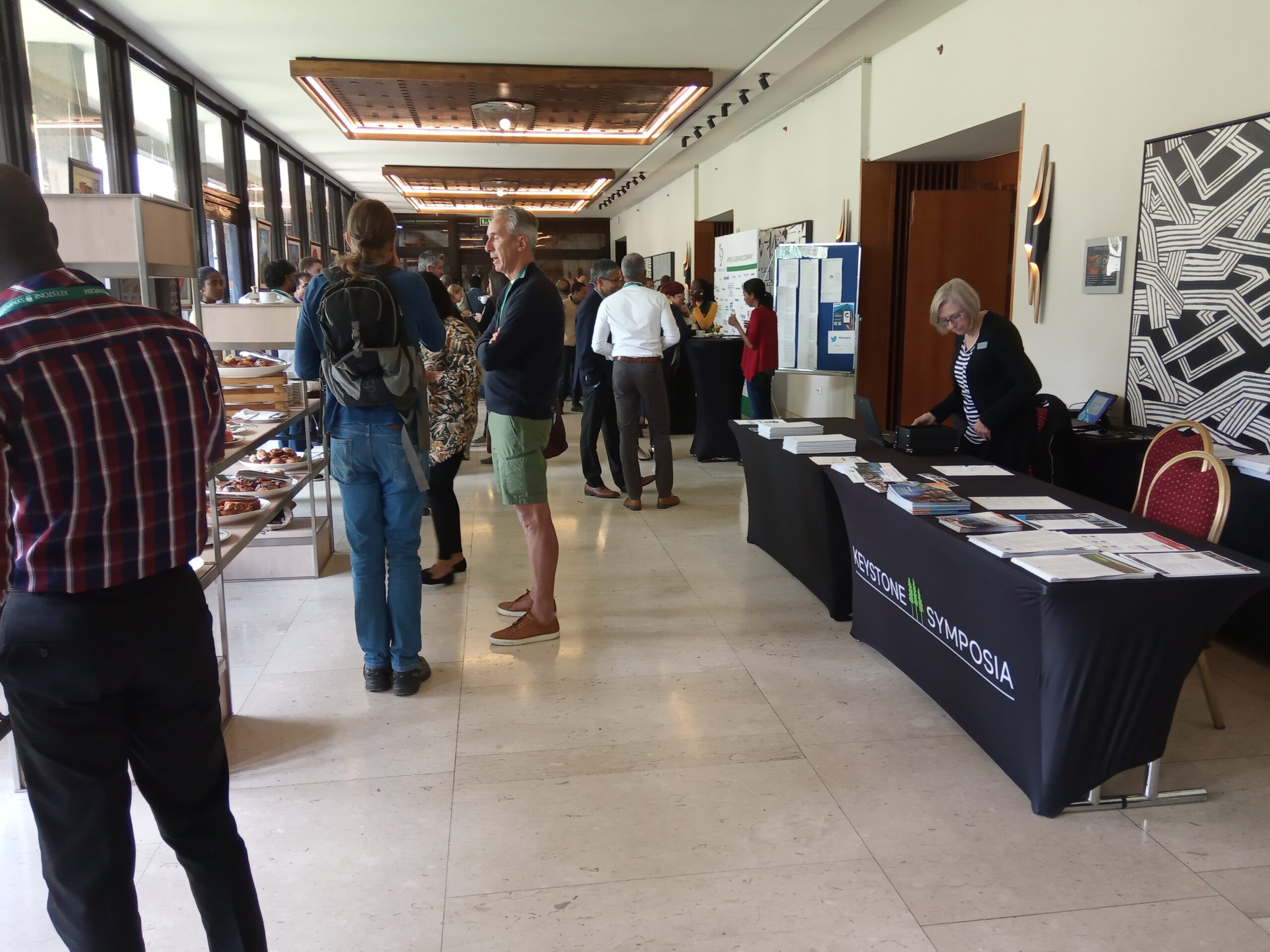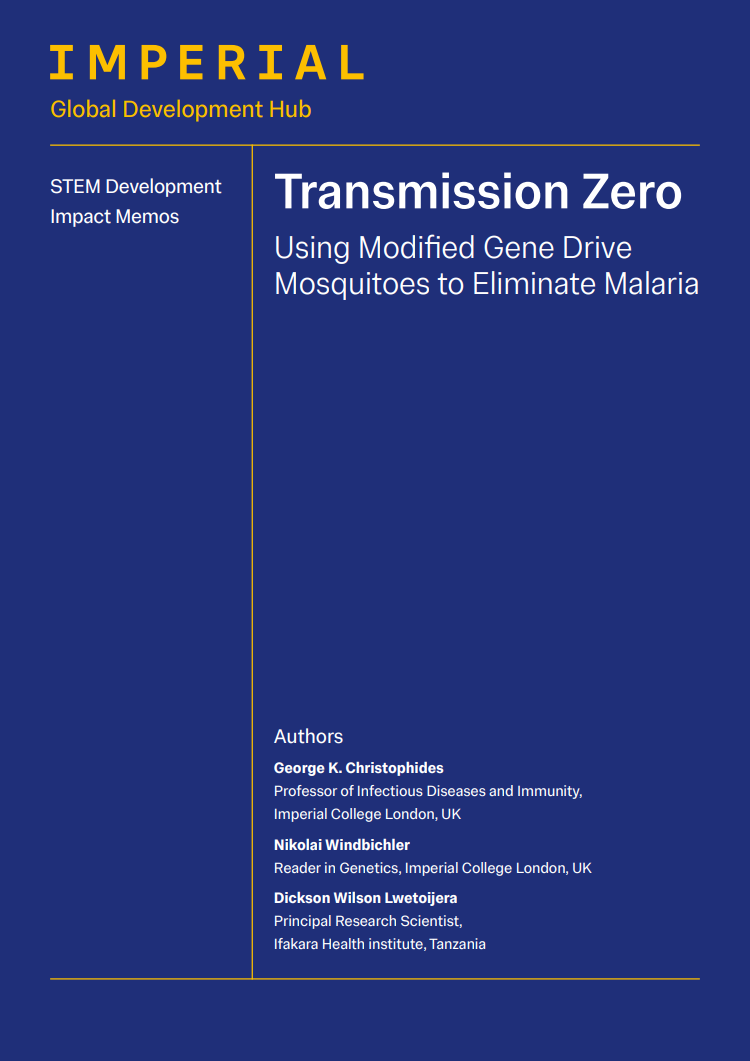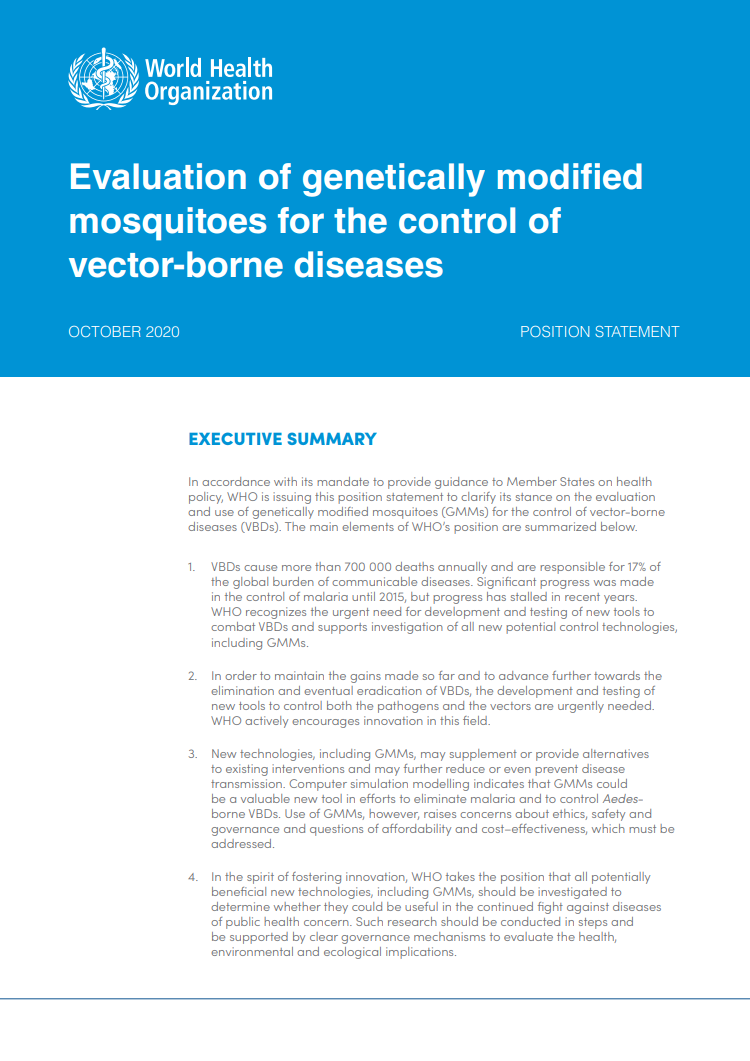Keystone Symposia “The Malaria Endgame” – 2019: Day 4
Saturday, 2nd November 2019
Published: 11/11/2019
This report is brought to you by the MESA Correspondents Solomon M. Abay, and Maya Fraser. Senior editorial support has been facilitated by Hannah Slater (PATH) and Flaminia Catteruccia.
THEMES: THEMES: Basic Science | Epidemiology | Health Systems
MESA Correspondents bring you cutting-edge coverage from the Keystone Symposia “The Malaria Endgame: Innovation in Therapeutics, Vector Control and Public Health Tools”
Day 4: Saturday, 2nd November 2019
Innovating to Enable Malaria Elimination I
Janice A. Culpepper (Bill and Melinda Gates Foundation, USA) welcomed participants for the last day of Keystone Symposia and moderated the morning session. She invited Thierry T. Diagana (Novartis Institute for Tropical Diseases -NITD, USA) who shared Novartis’ antimalarial drug discovery and development pipeline. NITD has a drug portfolio for malaria, leishmaniasis and cryptosporidiosis. He gave the examples of projects targeting blood stages and chemoprevention targeting hypnozoites. His research team have two products, KAE609 which inhibits parasite growth, and KAF156 that is active against Plasmodium falciparum and Plasmodium vivax with an unknown mechanism, that have reached Phase 2 clinical studies. KAF156 targets both the hepatic and blood stages and can be a potential preventive, therapeutic and transmission-blocking product. His team is developing long-acting KAF156 to make it a candidate drug for chemoprophylaxis.
Lluis Ballell (GlaxoSmithKline, Spain) shared work from four areas of development: monoclonal antibodies (mAbs), long-acting injectables, dual-active agents (liver and blood-stage) and targeting mosquitoes with bacteria that prevent them from spreading Plasmodium parasites. The work in mAbs included the finding that CSP NANP mAbs are likely driving the improved protection of fractionally dosed RTS,S over the normal dose. He also discussed candidate molecules for a long-acting injectable preventative that could last up to five months, and a dual active agent that has a novel mode of action. Audience interest seemed focused on the mosquito-targeting bacteria, which were discovered after a GSK mosquito colony lost infectiousness.
Why, asks Maria Mota (Instituto de Medicina Molecular, Portugal) do some people progress to severe malaria while others do not, and why can this manifest as cerebral malaria, severe anemia, or respiratory distress? Her lab’s work suggested that the human microbiome may play a large role in reaction to the parasite. They infected both germ-free and normal mice with parasites and found a higher mortality rate in the normal mice. When they conducted another experiment targeting bacteria found in lungs, they were able to reduce mortality after parasite infection. This leads to the conclusion that plasmodium-triggered lung microbiota dysbiosis may be an important factor in the development of severe malaria. In addition to the microbiota, her team pointed out the involvement of host response to trigger respiratory distress that may be mediated through IL-10.
Alejandro Llanos-Cuentas (Universidad Peruana Cayetano Heredia, Peru) presented about the clinical development and implementation of tafenoquine for P. vivax malaria, which is widespread in the Americas, the Horn of Africa and Asia. Tafenoquine, discovered in 1978 by Walter Reed Army Institute of Research, is a derivative of primaquine with a long half-life. Tafenoquine had similar efficacy in preventing recurrence as the standard regiment of primaquine in two multicenter studies. He also showed that tafenoquine had 100% adherence related to single-dose administration whereas the adherence of primaquine was 62%. He argued that tafenoquine improved cure rate in people without G6PD deficiency and adequate CYP2D6 activity.
Aissata Barry (National Center for Research and Training for Malaria – CNRFP, Burkina Faso) tested a hypothesis that mature gametocytes sequester in the dermis to maximize the chance of uptake by mosquitoes. She found high mosquito infection rate by direct skin feeding, and gametocyte densities were similar in skin fed and membrane fed mosquitoes. Additionally, she observed that gametocyte densities in different blood compartments were similar. Her finding s the absence of evidence for parasite sequestration.
Ashenafi Assefa (Ethiopian Public Health Institute, Ethiopia) presented study outcomes comparing short course and standard 14-day regimen primaquine for the radical cure of Plasmodium vivax malaria. The study involved patients from Ethiopia, Afghanistan and Indonesia to assess symptomatic recurrences over 12 months and risk of hemolysis. The study arms were: primaquine 7-day, primaquine 14-day and control with placebo. Incidence rate of P. vivax infection was 0.96% in control arm, PQ 0.18% in 7-day and 0.16% in 14-day arms. Patients assigned in all arms had similar tolerability. In general, 4 serious adverse events were recorded in intervention arms, 3 in 7-day and 1 in 14-day arms and he explained that this adverse event was due to G6PD heterozygous trait in female participants which were missed at the time of enrollment to the study. He concluded that the 7-day regiment is not inferior to 14-day regimen in efficacy to prevent relapse and speculated advantage of the 7-day regimen in improved adherence and effectiveness for radical cure of P. vivax infection.
Innovating to Enable Malaria Elimination II
Flaminia Catteruccia (Harvard TH Chan School of Public Health, USA), beloved senior editor of these MESA Correspondents reports, spoke about her lab’s work experimenting with antimalarials in mosquitoes. In theory, if we can treat mosquitoes with antimalarials, without affecting mosquito reproduction and longevity, there will be no selection pressure in mosquitoes against these compounds. Her lab performed a proof-of-concept experiment using atovaquone. They exposed infected mosquitoes to an atovaquone-treated surface and found that all parasites were killed, even with only six minutes of exposure. This still works 12 hours’ post-infection, meaning that IRS is a potential formulation for this solution. Finally, her team experimented with adding atovaquone to attractive targeted sugar baits, which resulted in the killing of all parasites within the mosquitoes. To avoid contributing to parasite resistance, the team has begun to screen novel compounds that could be used as antimalarials in mosquitoes.
Nicholas M. Hamon (Innovative Vector Control Consortium – IVCC, UK) gave an overview of the Zero by 40 initiative, a partnership between six large chemical partners to work towards eradication by 2040 through the development of new vector control tools. IVCC works as an organizing body for this development agenda, mitigating risk for companies and providing technical expertise. This research agenda has resulted in four new potential insecticides, with one back-up. Their three most important areas of focus moving forward are getting dual-active ingredient nets to market, stopping outdoor transmission, and creating next-generation approaches to IRS. The speaker stressed that IVCC believes that eradication is possible by 2040, and that these new tools will be a necessary component of reaching that goal.
Austin Burt (Imperial College London, UK) talked about gene drive and the importance of translating it from bench to field. He gave the current context of malaria control and elimination and stressed that Africa will not eliminate malaria by 2030 if the current achievements are maintained with the same pace. This rationalizes the need to have new tools to eliminate malaria, among which is the use of gene drives that suppress mosquito populations. After explaining how gene drives can spread in field populations, he discussed that a successful gene drive system requires not only the appropriate gene construct, but a wider recognition of implementation challenges including support from the regulatory authority, support from the public and communities, and sufficient local capacity to release the gene drive mosquitoes.
Lilian Mbaisi Ang’ang’o (International Centre of Insect Physiology and Ecology – ICIPE, Kenya) gave a detailed account of how a novel microsporidian blocks Plasmodium falciparum transmission in Anopheles arabiensis mosquitoes. She stated that Microsporidia prevalence across different regions of Kenya varies and found that there was no coinfection with P. falciparum. Her team observed that the symbiont is transmitting vertically from the infected mother to its progeny at high efficiency (45-100%). Their field observation on lack of coinfection was validated in laboratory: microsporidia infection blocked Plasmodium development inside the vector by arresting plasmodial development at oocyst stage without having any host fitness cost.
Tibebu Habtewold (Imperial College London, UK) came out with tough questions for those of us working with mosquitoes: why are our mosquito husbandry practices so different from what occurs in the wild? What implication does this have for our evaluation of transmission blocking tools? Specifically, he pointed to the common practice of feeding an infected blood meal to mosquitoes and then only feeding them sugar until oocysts are counted. In the wild, the mosquito might feed multiple times in that interval, and would then lay eggs. He found that the relationship between oocysts and sporozoites was different with and without multiple blood meals, calling into question the current Standard Operating Procedures (SOP).
Helen V. Jamet (Bill and Melinda Gates Foundation, USA) discussed future approaches to vector control. She argued that an ideal vector control product should have four characteristics: not disrupting day-to-day life, inexpensive, not need to be re-applied frequently, and accepted and valued by the people who must use it. This last characteristic has often been lacking in the history of vector control due to poor communication between developers and end-users. She gave two examples of excellent community engagement leading to success: human African trypanosomiasis (HAT) eradication efforts resulting in the introduction of “Tiny Traps” and the Target Malaria project which engaged communities around the first initial sterile male releases that might eventually lead to gene drive testing. Finally, she discussed the replication crisis, and called for improvements in vector control testing and SOPs to ensure high-quality evidence.
Fitsum G. Tadesse (Armauer Hansen Research Institute, Ethiopia) presented about the contribution of asymptomatic infections to transmission from his studies based in Ethiopia and Uganda. From a previous cross-sectional study, it has been known that high rate of mosquito infection in Africa was from asymptomatic cases whereas in a study from Cambodia transmission is from symptomatic cases. His current study involves running a longitudinal assessment of the infectious reservoir using repeat membrane feeding assays on infected individuals. It was evident that infectivity to mosquitoes was related to parasite density. A decline in the contribution of asymptomatic infections throughout the study was observed, and minority of individuals, called by the research team super-spreader, remained infectious throughout the study. He concluded that P. falciparum infection can persist for many months at fluctuating asexual densities and can continue to produce gametocytes throughout.
Philip Welkhoff (Bill and Melinda Gates Foundation – BMGF, USA) discussed how the BMGF malaria strategy has changed to adapt to new challenges. In particular, they are pivoting to take a pathway towards eradication that minimizes deaths along the way. Taking lessons from polio, he stressed three elements that will help both reduce burden and work towards eradication: good surveillance, better case management, and vector control. As an integral part of these efforts, countries should be empowered to use data and make subnationally tailored plans to achieve their goals. Finally, he raised the difficult question of what we should not do. He compared our situation to the trolley problem: any resources we use in one place are resources that we cannot use somewhere else. For example, universal bednet coverage in low-transmission areas may not be a solution that will have the greatest effect on the amount of money spent. Ultimately, the balance of resources is a difficult problem that will require extensive thought within the malaria community.
Kristine Werling (Harvard TH Chan School of Public Health, USA) talked about how Plasmodium development in the Anopheles mosquito builds an adaptable relationship that shapes malaria transmission and control. She said that mosquito egg development and Plasmodium development were linked. A .gambiae did not suffer reproductive costs of infection with Plasmodium falciparum. While A. gambiae egg and P. falciparum oocyst numbers were positively correlated in both laboratory and field P. falciparum, oocyst mean size (a proxy for parasite growth rates) was inversely correlated with egg development. Suppression of mosquito reproductive processes accelerated parasite development, increasing chances of parasite transmission. She concluded that P. falciparum development is responsive to physiologic changes in A. gambiae, with implications for mosquito control strategies.
Flaminia Catteruccia, who moderated the last session, acknowledged participants and handed over the mic to Thierry Diagana. He thanked all the speakers, appreciated the energy and enthusiasm of participants and valued the conversations and wished all to keep it up. He stressed everybody to reach out and keep learning basic biology of the parasite and vector. Flaminia Catteruccia thanked Keystone symposia organizers and all participants. Philip Welkoff appreciated the connection people will have after this symposium.
This report is brought to you by the MESA Correspondents Solomon M Abay (University of Addis Ababa, Ethiopia) and Maya Fraser (PATH). Senior editorial support has been facilitated by Hannah Slater (PATH) and Flaminia Catteruccia (Harvard T.H. Chan School of Public Health). This report is cross-posted on the MESA website, the Keystone Symposia Keypoint Blog and on MalariaWorld.
Published: 11/11/2019
This report is brought to you by the MESA Correspondents Solomon M. Abay, and Maya Fraser. Senior editorial support has been facilitated by Hannah Slater (PATH) and Flaminia Catteruccia.
THEMES: Basic Science | Epidemiology | Health Systems


